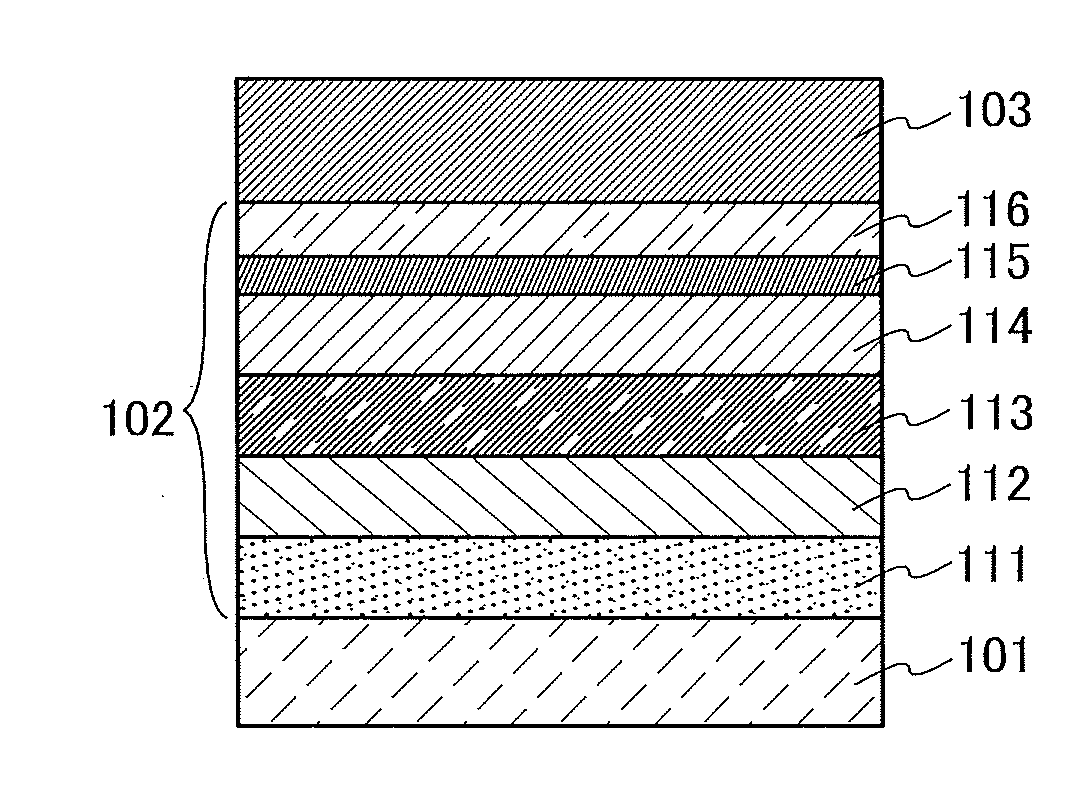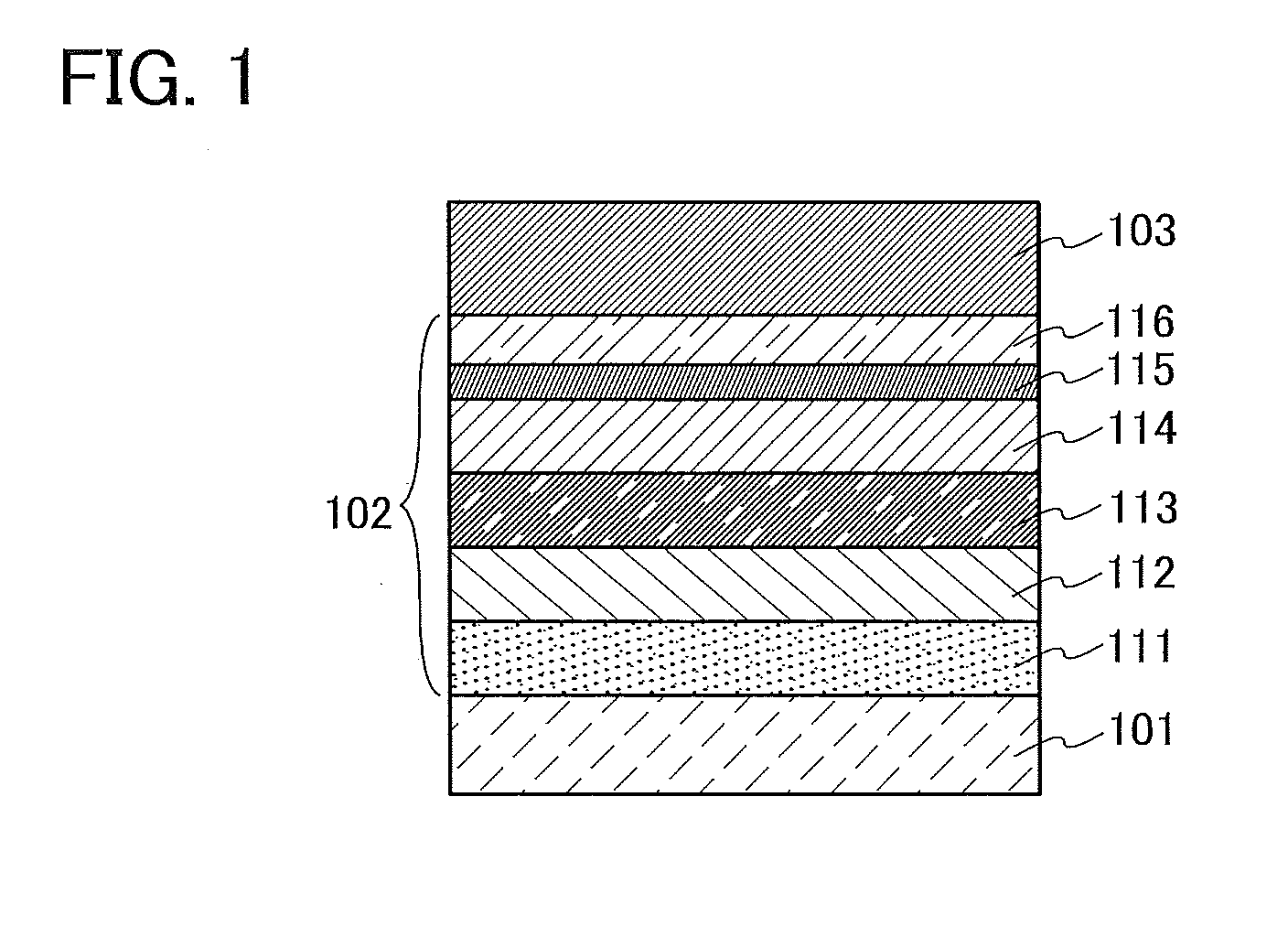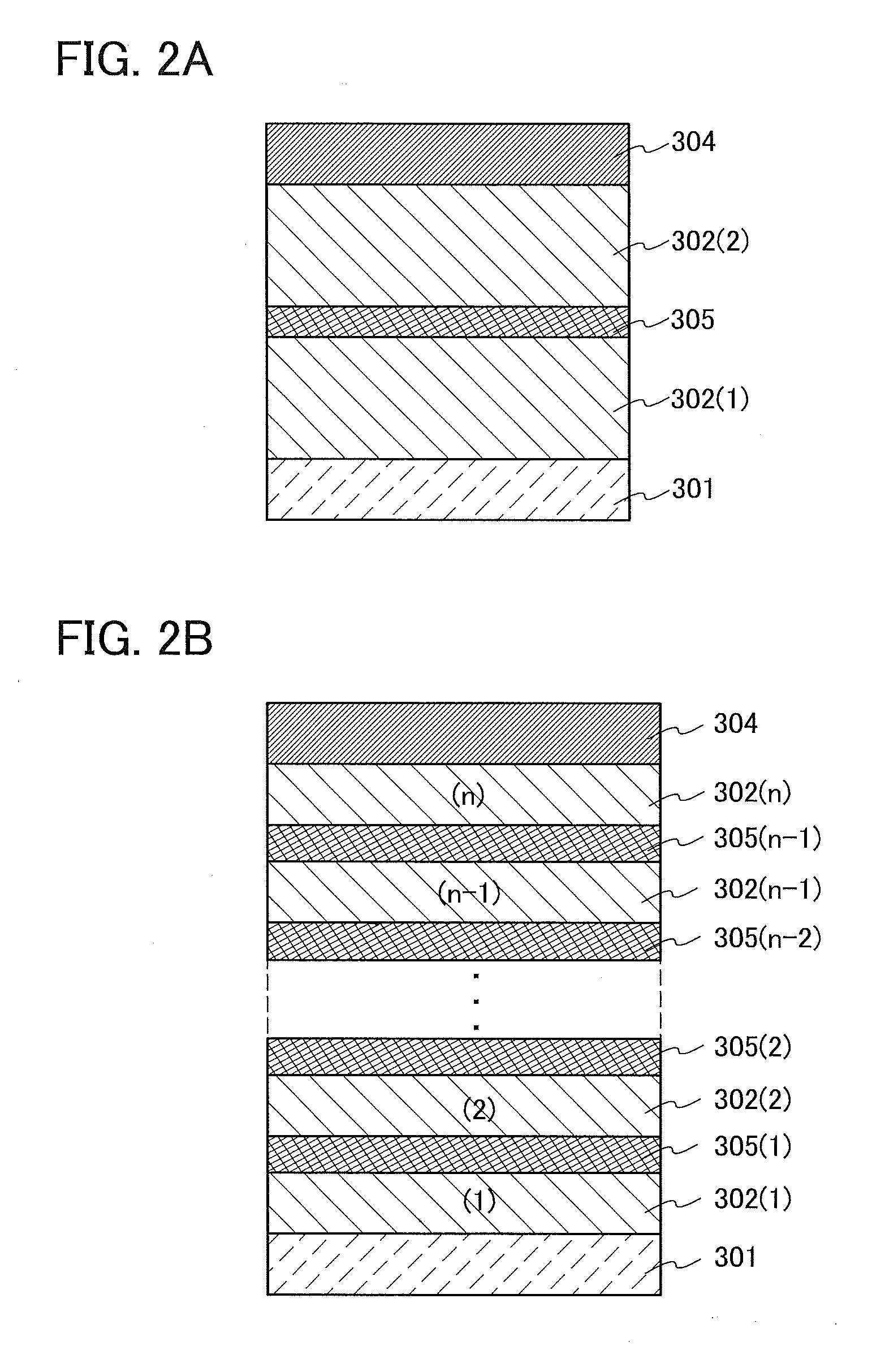Organic Compound, Light-Emitting Element, Light-Emitting Device, Electronic Device, and Lighting Device
a light-emitting element and light-emitting device technology, applied in the field of organic compounds, can solve problems such as difficult to obtain features, and achieve the effects of low homo level, high emission efficiency and high efficiency
- Summary
- Abstract
- Description
- Claims
- Application Information
AI Technical Summary
Benefits of technology
Problems solved by technology
Method used
Image
Examples
embodiment 1
[0051]In this embodiment, organic compounds of embodiments of the present invention will be described.
[0052]An organic compound of one embodiment of the present invention is represented by General Formula (G1).
[0053]In General Formula (G1), Ar1 represents a substituted or unsubstituted fluorenyl group, Ar2 represents a substituted or unsubstituted aryl group having 6 to 13 carbon atoms, and A1 represents any one of a substituted or unsubstituted dibenzofuranyl group and a substituted or unsubstituted dibenzothiophenyl group. Note that when Ar1, Ar2, or A1 has one or more substituents, the substituent is any one of an alkyl group having 1 to 4 carbon atoms and an aryl group having 6 to 13 carbon atoms. Note that the aryl group does not include a heteroaryl group. The substituents may be bonded to each other to form a ring.
[0054]An organic compound of one embodiment of the present invention is represented by General Formula (G2).
[0055]In General Formula (G2), Ar3 represents a substitu...
embodiment 2
[0080]In this embodiment, a light-emitting element in which the organic compound described in Embodiment 1 as one embodiment of the present invention is used for a light-emitting layer is described with reference to FIG. 1.
[0081]In a light-emitting element described in this embodiment, as illustrated in FIG. 1, an EL layer 102 including a light-emitting layer 113 is provided between a pair of electrodes (a first electrode (anode) 101 and a second electrode (cathode) 103), and the EL layer 102 includes a hole-injection layer 111, a hole-transport layer 112, an electron-transport layer 114, an electron-injection layer 115, a charge generation layer (E) 116, and the like in addition to the light-emitting layer 113. Note that the light-emitting layer 113 contains a first organic compound, a second organic compound, and a light-emitting substance (guest material) which converts triplet excitation energy into light emission.
[0082]By application of a voltage to such a light-emitting elemen...
embodiment 3
[0109]In this embodiment, as one embodiment of the present invention, a light-emitting element (hereinafter referred to as tandem light-emitting element) in which a charge generation layer is provided between a plurality of EL layers is described.
[0110]A light-emitting element described in this embodiment is a tandem light-emitting element including a plurality of EL layers (a first EL layer 302(1) and a second EL layer 302(2)) between a pair of electrodes (a first electrode 301 and a second electrode 304) as illustrated in FIG. 2A.
[0111]In this embodiment, the first electrode 301 functions as an anode, and the second electrode 304 functions as a cathode. Note that the first electrode 301 and the second electrode 304 can have structures similar to those described in Embodiment 2. Although the plurality of EL layers (the first EL layer 302(1) and the second EL layer 302(2)) may have the same structure as that of the EL layer described in Embodiment 2, any of the EL layers may have th...
PUM
 Login to View More
Login to View More Abstract
Description
Claims
Application Information
 Login to View More
Login to View More - R&D
- Intellectual Property
- Life Sciences
- Materials
- Tech Scout
- Unparalleled Data Quality
- Higher Quality Content
- 60% Fewer Hallucinations
Browse by: Latest US Patents, China's latest patents, Technical Efficacy Thesaurus, Application Domain, Technology Topic, Popular Technical Reports.
© 2025 PatSnap. All rights reserved.Legal|Privacy policy|Modern Slavery Act Transparency Statement|Sitemap|About US| Contact US: help@patsnap.com



